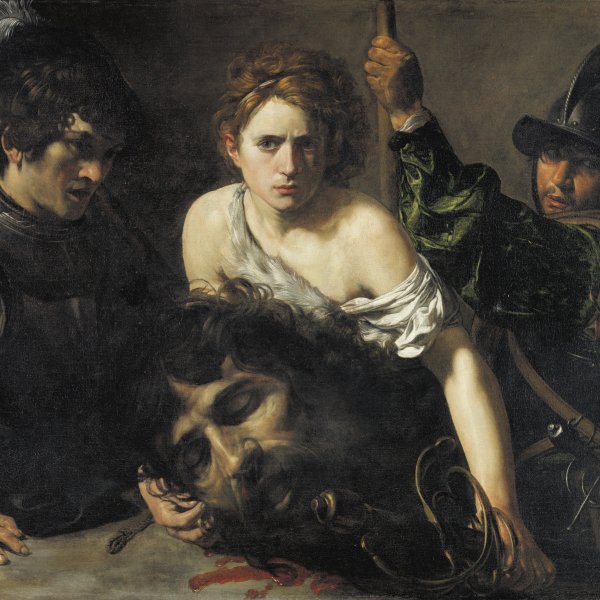Valentin de Boulogne
Coulommiers (Seine-et-Marne), 1591-Rome, 1632
Born in Coulommiers, France, into a family of artists, at a very young age Valentin de Boulogne moved to Rome where he lived and worked until his death. He is first documented in that city in 1620 in the census of the Santa Maria del Popolo quarter, although according to his biographer Sandrart he arrived there between 1613 and 1614. Little is known regarding the artist’s training, but he may have studied with his fellow Frenchman Vouet. In 1624 he is registered in the Schildersbent, the association of northern artists resident in Rome, where he was given the nickname “Amador”. De Boulogne was also in contact with the French members of the Accademia di San Luca, such as Vouet and Poussin.
De Boulogne’s painting reveals the marked influence of Caravaggio and Bartolomeo Manfredi. He produced portraits, for example that of Raffaello Menicucci (Indianapolis Museum of Art), history paintings such as the Allegory of Rome (Finnish Institute, Rome), and religious works, including Christ and the Woman taken in Adultery (J. Paul Getty Museum, Los Angeles), and Moses (Kunsthistorisches Museum, Vienna). De Boulogne’s most popular works were, however, his genre scenes, including Soldiers playing Cards and Dice (National Gallery of Art, Washington), and The Concert (Musée du Louvre, Paris). Like many of the French artists in Rome, De Boulogne enjoyed the support of the Barberini family and from 1627 onwards received commissions from Cardinal Francesco Barberini and other Roman nobles. Two years later and through the Cardinal, De Boulogne received his most important commission, to paint The Martyrdom of Saints Processus and Martinian for an altar in Saint Peter’s (now Pinacoteca Vaticana). The artist based himself on Poussin’s The Martyrdom of Saint Erasmus, also painted for an altar in Saint Peter’s.
De Boulogne’s painting reveals the marked influence of Caravaggio and Bartolomeo Manfredi. He produced portraits, for example that of Raffaello Menicucci (Indianapolis Museum of Art), history paintings such as the Allegory of Rome (Finnish Institute, Rome), and religious works, including Christ and the Woman taken in Adultery (J. Paul Getty Museum, Los Angeles), and Moses (Kunsthistorisches Museum, Vienna). De Boulogne’s most popular works were, however, his genre scenes, including Soldiers playing Cards and Dice (National Gallery of Art, Washington), and The Concert (Musée du Louvre, Paris). Like many of the French artists in Rome, De Boulogne enjoyed the support of the Barberini family and from 1627 onwards received commissions from Cardinal Francesco Barberini and other Roman nobles. Two years later and through the Cardinal, De Boulogne received his most important commission, to paint The Martyrdom of Saints Processus and Martinian for an altar in Saint Peter’s (now Pinacoteca Vaticana). The artist based himself on Poussin’s The Martyrdom of Saint Erasmus, also painted for an altar in Saint Peter’s.





